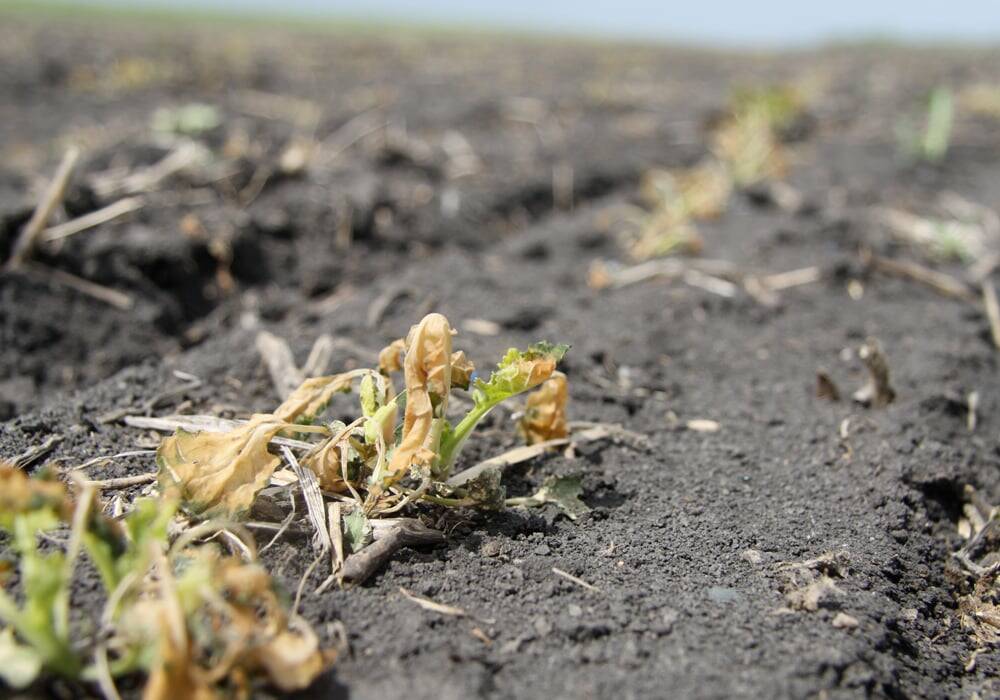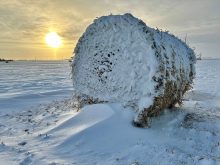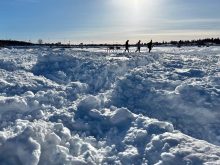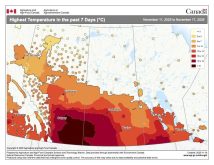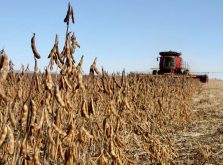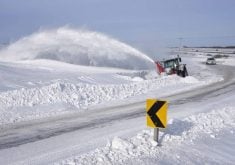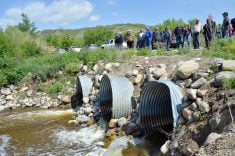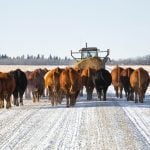In the last column, I tried to answer what seems like a simple question: what causes areas of high and low pressure?
The general model of atmospheric circulation has warm air rising around the equator (low pressure) and cold air settling around the poles (high pressure) – thermally induced low and high pressure. Because the Earth spins, it introduces two dynamically induced areas of low and high pressure.
The first is subtropical highs that form as air accumulates in the upper atmosphere and is forced toward the surface. The second is when northward moving air at the surface bumps into southward moving air from the poles. This forces the air upward, resulting in the sub-polar region of low pressure.
Read Also
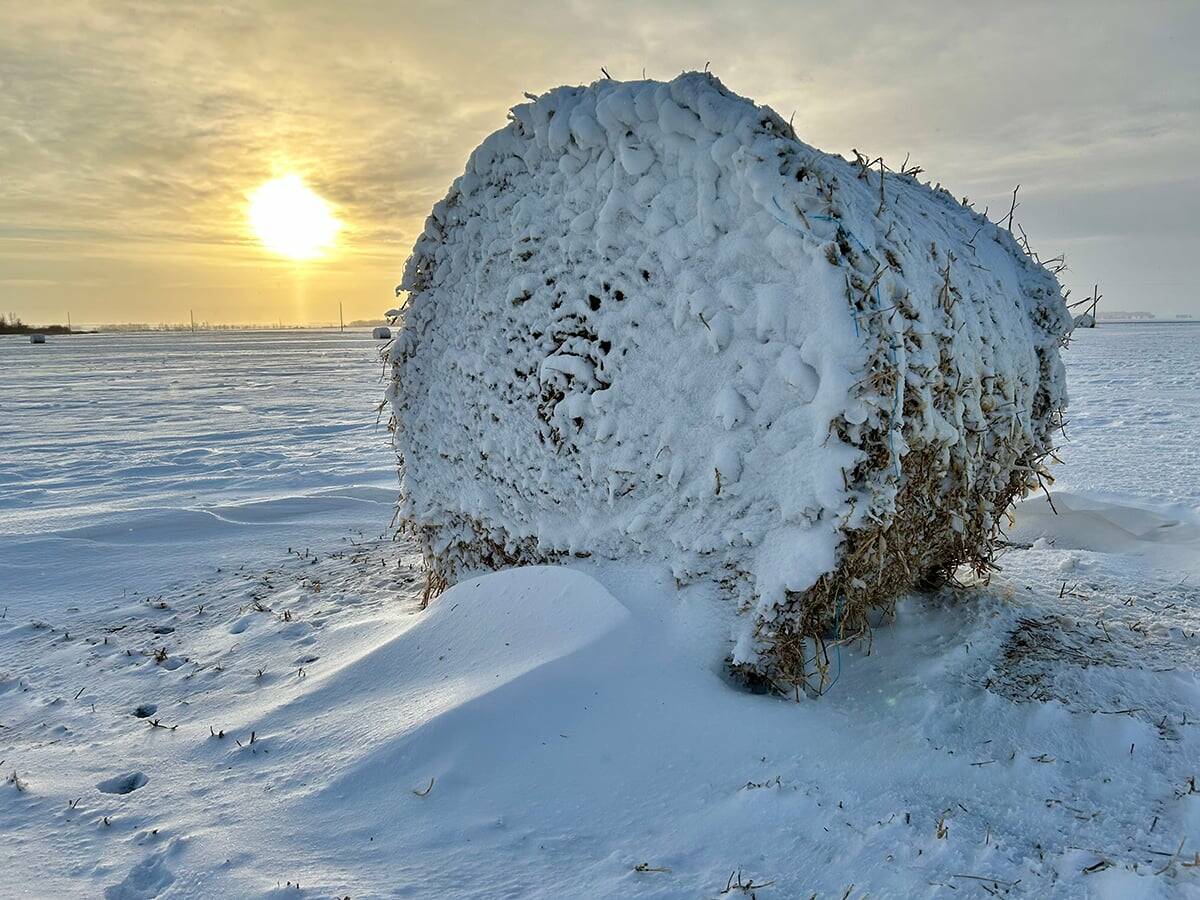
What is perfect Christmas weather?
What is ‘perfect’ Christmas weather on the Prairies? Here’s where you should head this holiday, according to historical weather data.
Our region of the world is in between the dynamically produced high to our south and the low to our north. The interaction between these two features is why we live in the most dynamic weather environment in the world. What’s the saying? If you don’t like the weather, wait a minute.
Let’s continue our look at areas of high and low pressure, and in particular, how converging and diverging air within our region allows secondary areas of high and low pressure to develop and influence weather.
Atmospheric pressure is the force exerted by the weight of the air above a particular point. It is measured in units such as millibars (mb) or kilopascals (kPa). High- and low-pressure areas are regions where the atmospheric pressure is significantly above or below the average sea-level pressure.
Areas of low pressure are characterized by rising air and are associated with cloudy, rainy or stormy weather. Several key mechanisms contribute to this. First, there is surface convergence, which occurs when air flows from different directions and converges. This can be caused temperature gradients, topography or atmospheric disturbances.
As air converges at the surface, it is forced to rise. This lowers surface pressure.
The second mechanism is adiabatic cooling. Adiabatic processes refer to changes in temperature without heat exchange with the surrounding air. As air rises due to convergence, it moves into lower pressure areas at higher altitudes and expands.
This expansion causes the air to cool, reducing its capacity to hold moisture and leading to condensation and cloud formation. The release of latent heat during condensation can, and often does, enhance the upward motion of air since it iss gaining heat.
We can also have areas of low pressure develop much like it does around the equator — thermal lows that form due to differential heating of the Earth’s surface. During the day, land heats up faster than water, causing the air above land to warm and expand. This creates a low-pressure area. The warmer, less dense air rises, and cooler air from surrounding areas moves in to replace it, maintaining the low pressure.
Examples of these three types of low-pressure systems:
Mid-latitude cyclones: These form when two different air masses collide, forcing air to lift and create an area of low pressure.
Tropical cyclones: These form over warm ocean waters where intense surface convergence and rising motion lead to development of a low-pressure centre.
Monsoons: Seasonal low-pressure areas are driven by differential heating between land and ocean surfaces.
High-pressure areas, or anticyclones, are characterized by descending air and are usually associated with clear, stable weather. The first mechanism has to do with wind. Instead of converging air, there is divergence of air.
As air diverges at the surface, it creates a deficit of air over that region, which is replaced by air descending from higher altitudes. This descending air increases the mass of air in the column above the surface, raising surface pressure.
The next mechanism is adiabatic warming. As air descends, it creates higher pressure areas as it compresses. This causes the air to warm, increasing its capacity to hold moisture and preventing cloud formation. The warming stabilizes the atmosphere, reinforcing the high-pressure system.
Last, we have thermal highs. These form due to differential cooling of the Earth’s surface. At night or during winter, land cools faster than water, causing the air above the land to cool and become denser. This creates a high-pressure area over the land as the colder, denser air sinks and spreads outward.
This is why we often see skies clear in the evening and overnight. We can also see this during the day over large bodies of water such as Lake Winnipeg. The cooler lake, compared to the land around it, creates descending air, allowing high pressure over the lake.
Examples of high-pressure systems:
Mid-latitude highs: These form when air in a region is flowing away or diverging. Since no air can replace it horizontally, air must descend from above, creating an area of high pressure.
Continental highs: These form over continents during winter due to intense radiative cooling, such as the Siberian high or Arctic high.
To increase the complexity level, areas of high and low pressure can develop between the interactions of convergent and divergent air flows. There are frontal systems where denser cold air forces warmer air to rise, leading to convergence and low pressure ahead of the front.
There are orographic effects such as when air is forced up a mountain slope, converges and rises, creating low pressure and precipitation. On the leeward side, the descending air diverges and warms, creating high pressure and dry conditions.
Daniel Bezte is a teacher by profession with a BA (Hon.) in geography, specializing in climatology, from the U of W. He operates a computerized weather station near Birds Hill Park.


